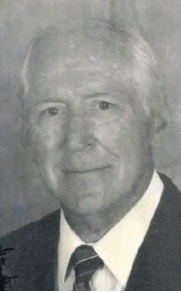Sinking of German submarines during WWll
This article is based on a series of interviews with Wing Commander ESS ‘Gar’ Nash (DFC, AFC)

DURING World War II, 75 Catalina Flying Boats of 10 Royal Air Force squadrons operated from Lake St Lucia, Lake Mzingazi in Richards Bay, Congella in Durban, Bot River, Breede River and Langebaan Lagoon.
The flying boats were used to spot and destroy German U-boats off the South African coast, where 163 allied ships were lost to Japanese and German submarines.
The PBY Catalina is possibly the most prolifically built amphibious aircraft ever. Some 3 200 Catalinas were built between 1939 and 1945.
Powered by two 1 200 hp Pratt & Whitney Twin Wasp R-1830 14-cylinder engines, the Catalina was a big plane.
It had a loaded mass of 15 400kg, a wing span of 31,7 metres, length of 19,5 metres, and a height of 5,65 metres.
The Catalina carried two machine guns in its glass ‘blisters’, one in its bow turret and in the tunnel under the hull.
It also carried three depth charges externally at the ends of the wing struts.
The pilots had to dive down to a height of only 25 metres to accurately drop the depth charges on top of the U-boat. A remarkable feature of the Catalina was its range of 4 960km.
It could stay aloft for 22 hours. Maximum speed was 196mph per hour and the cruising speed 100mph.
The two pilots and a crew of eight had a fully fitted kitchen with an electric stove as well as a comfortable toilet on board.

SA flying ace
Wing Commander ESS (Gar) Nash of 262 Squadron was born in Grahamstown in 1919 and joined the RAF in May 1939.
Nash and his crew ferried Catalina FP 174 ‘P’ from Oban in Scotland to Durban via Lake St Lucia in Zululand.
He landed in Langebaan on 6 March 1944 and sank German U-boat UIT-22 in the same Catalina only five days later.
Pilots Roddick, Surridge and Nash took off from Langebaan at 04h00 on the morning of 11 March 1944 and flew south in their three identical Catalinas in search of a suspected U-boat.
At 10h48, Roddick spotted the U-boat some 941km from the Cape. He dropped five depth charges on top of the surfaced U-boat.
When Nash arrived at the scene of battle, he observed evidence of debris and an oil slick where the U-boat had submerged.
To his amazement, ‘The U-boat surfaced in front of my eyes!’.
Roddick’s Catalina was severely damaged by the 20mm and 37mm U-boat anti-aircraft guns firing explosive shells and machinegun bullets.
The port wing and the float mechanism were damaged and the starboard engine was leaking oil. ‘Roddick was a bright chap.
We then had the bearing and Roddick had to go back to base,’ said Nash.
He could see the conning tower of the U-boat clearly, and he dropped all six depth charges from a height of only 25 metres. It was a perfect straddle.
Nash remained in the attack area for another two-and-a half- hours and eventually landed at Langebaan at 17h25 after spending more than 13 hours in the air.
He was too tired to celebrate the ‘kill’ and was close to tears as he lamented, ‘It is certainly not easy to talk about my feelings.
‘Suddenly you realise that your finger was on the button that killed other people. It was really upsetting.
‘I knew we were trained to kill – it was war – they were the enemy. But that night my heart was filled with sadness.’
It was the third (and last) U-boat kill in South African waters.
Nash said the irony was that UIT- 22 (formerly the Italian submarine ‘Alpino Bagnolini’ of 1 166 tons), was a replenishment submarine under the command of Oberleutnant zur See, Karel Wunderlich (32).
His first patrol lasted only 46 days.
Code broken
The German U-boat radio transmissions were in secret ENIGMA code, which was later decoded and translated by the British in a top-secret operation called ULTRA.
The sinking of U-boat UIT-22 might also have been the result of brilliant intelligence work by Post Office operators of South African designed Radio Direction Finders.
This resulted in locating and sinking, on 20 August 1943, of U-197 (973km east of St Lucia and 413km south of Madagascar), by two Catalina Flying Boats, one from Lake St Lucia and one from Tulear, Madagascar.
All 67 hands in U-197 were killed. Roddick was awarded the DFC on 29 April 1944.
Wing Commander, DB Osmonde-White, organised a party to celebrate his decoration.
Gar Nash was promoted to Wing Commander of 262 Squadron RAF.
During their anti-submarine patrols, convoy escorts and search and rescue missions, the 75 Catalina Flying Boats saved hundreds of Allied ships and thousands of lives.
They sank U-197 and UIT-22 and damaged U-859.
Sadly, 18 British, Australian, Canadian and South African Catalina airmen died in fatal crashes in Zululand. All were buried in Stellawood cemetery in Durban.
Wing Commander ESS ‘Gar’ Nash, DFC, AFC, died in Whangaparoa, New Zealand on July 2002 at the age of 83 years.
HAVE YOUR SAY
Like our Facebook page and follow us on Twitter.
For news straight to your phone invite us:
WhatsApp – 072 069 4169
Instagram – zululand_observer


